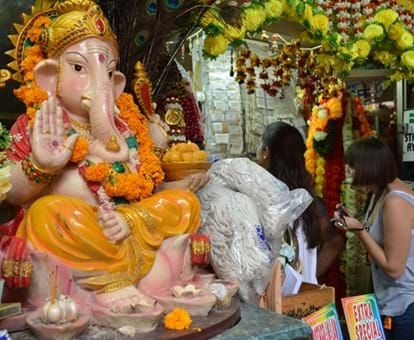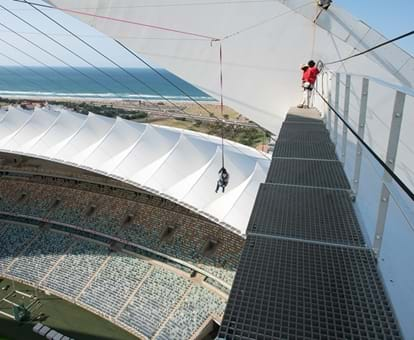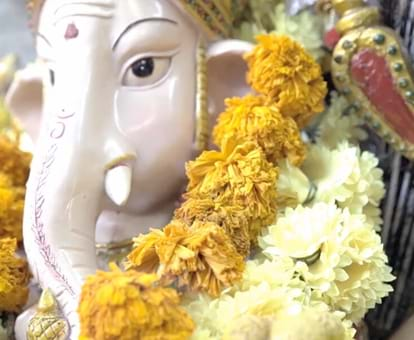By creating an account, I agree to the
Terms of service and Privacy policy
Choose your country and language:
Africa
Americas
Asia Pacific
Europe
FFlying into Durban from one of my various overseas business trips, my heart always does a little backflip in anticipation. As the Durban skyline becomes visible on the horizon, one can almost hear the beat of the African drum and Indian drum beating in unison in welcome, and my tummy grumbles at the thought of relishing some aromatic Durban curry and shisa nyama (traditional barbequed meat).
After all, I am firstly proudly South African, with a good dollop of Indian. South African Indians sailed into Durban as indentured workers in 1860. I always wonder what my ancestors’ first thoughts were as they sailed into the Durban port more than a century ago. When I travel to Durban, I am always mesmerised by the kaleidoscope of blue and turquoise reflecting back at me while we circle to land, and the warm African sunbeams playing hide and seek through the airplane window. The prominent landmark Moses Mabhida Stadium is visible too - I can still hear the cheers from the 2010 Soccer World Cup. Lush flora and fauna are visible on the coastline of the pristine beaches. We circle the city centre and harbour and finally touch down… I am home!
MMy ancestors arrived around 1861 and 1862 as paid travellers. My maternal side of the family hailed from Pondicherry in India, and established jewellery manufacturing businesses. My paternal side hailed from the Arcot region in India and served the community in Durban as priests. They brought their rich heritage of delicious spices, culture and art with them, but most importantly they brought their humility, service to all mankind, beautiful traditions and dedication to labour. Now, more than 150 years later, these core values remain within the Indian community and have evolved to incorporate tenets from all the other diverse cultures around us.
Indian music, dance and other cultural aspects are enthusiastically celebrated at various venues around the town. Carnatic (Indian classical music), Bharathanatyam (South Indian) and Kathak (North Indian) dance styles are definitely worth an audience, and The Playhouse in town is one of my favourite venues to attend some of these recitals.
A bucket list to-do, as part of your South African Indian tour experience is to ask to attend an Indian wedding. Durban Indians are a gregarious lot, and are only too happy to explain all their colourful rituals and festivities. They’ll also never let you leave without partaking in a good meal with them, which comes with lots of laughter and dancing too.
IIndians of different religious faiths exist symbiotically and over the years have come to appreciate others’ beliefs. There are many Hindu temples in Durban, my favourite being the Hare Krishna Temple of Understanding in Chatsworth. Colourful festivals are held throughout the year and there is always someone on hand to explain the relevance of the rituals performed. Chatsworth was a pre-Apartheid Indian area, and has the highest concentration of Indian people outside of India. Chatsworth is a must-visit destination in Durban, and it’s here where you’ll find the spirit of “Vasudhaiva Kutumbakam”, a Sanskrit phrase that literally translates to “the world is one family”. If you’re visiting this area, you’re always welcome to join the family for a home-cooked meal.
A drive past the Umgeni Road temple, Stree Vaithianatha Easperar Alayam, is also recommended as you’ll see the 26-foot tall statue of the Hindu God Shiva. The first formal temple established in Durban was near the harbour where the Indians disembarked, but was washed away during the 1905 floods. This resulted in the construction of the First and Second River Temples built on the banks of the Umbilo River that still stand to this day.
The cultural centre in Derby Street is definitely worth a visit in order to better understand the origin and evolution of Indians in South Africa. A short walk from here is the Juma Masjid Mosque (established 1930 ). Calls to prayer can be heard throughout the day, and this iconic mosque situated in Grey Street has a capacity for 7 000 people.
About 100m from Juma Masjid Mosque stands Resistance Square. It was from this site that the passive resistance movement, spearheaded by Dr Monty Naicker, Yusuf Dadoo and many others met under the banner of freedom and called out to the people to resist the atrocities of Apartheid laws. This was in violation of the Anti Assembly and Riotous Act that prevented the gathering of people of colour. The former Grey Street area (now Dr Yusuf Dadoo Street) formed the eclectic hub for most business activities and was an important social meeting place for most Indians. It still houses various 4th-generation fabric houses, spice shops and manufacturing jewellers.
Victoria Street Market is steeped in history as the original market was mysteriously burnt. The market now has three segments each worthy of a visit, and sell the likes of meat, fish, fruit, vegetables, trinkets, spices, fabrics and more can be bought.
The great Mahatma Gandhi spent 20 years in South Africa and a better part in Phoenix. The site of the printing press and museum is well worth a visit together with the John Dube Museum a few kilometres away. This is the site where South Africa‘s first democratically elected president Nelson Mandela cast his first vote. It is also the gravesite of the first president of the African National Congress, John Dube.
Anyone who visits Durban is warm heartedly welcomed as a visitor, but when you do reluctantly leave, you do so as family.

AAbout the author
Keru Moodley is a qualified pharmacist and an avid world traveller. She is CEO of a pharmaceutical company and also an actress and model for ICE Genetics, Cape Town. She was born in South Africa but also lived many years abroad between Miami and Santo Domingo. She currently lives in Durban.
Related articles





